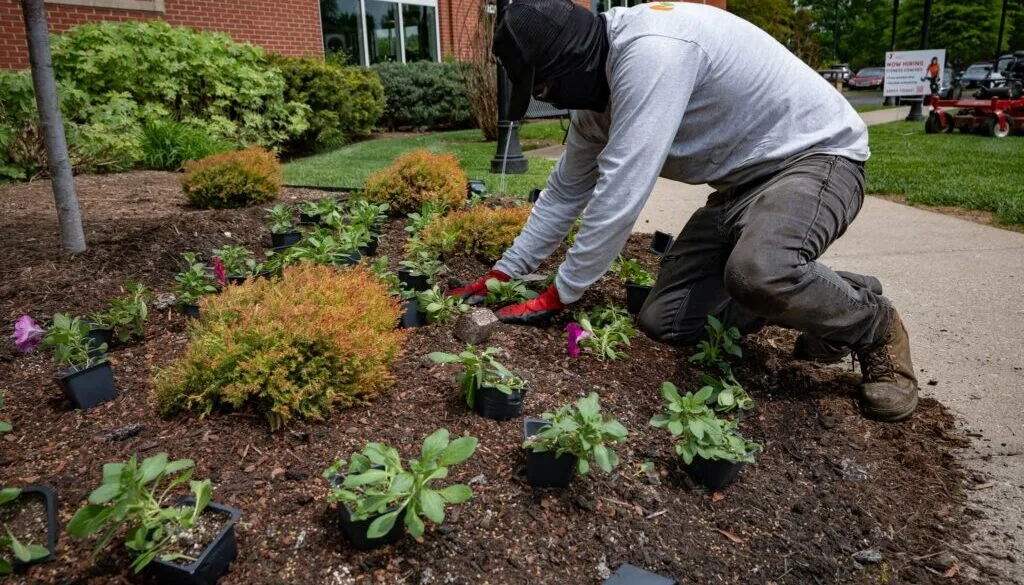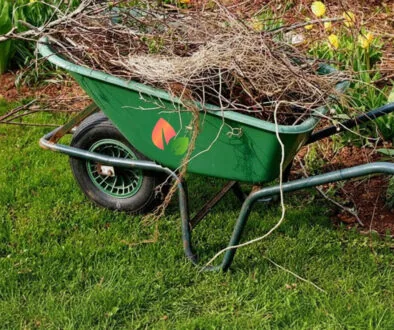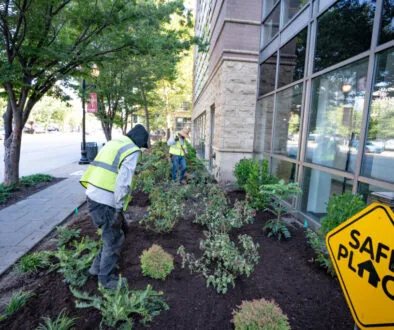Best Practices For Curb Appeal on Commercial Properties
Foundational Landscape Best Practices that Make a Big Difference
In commercial landscape management, every detail matters—not just for the beauty of the property, but for its efficiency, safety, and maintenance costs. By following a few core best practices, commercial property owners and managers can significantly improve their property’s appearance and function while keeping expenses in check.
1. Clean Bed Delineation & Smart Contours Promote Turf Quality and Mowing Efficiency
A well-defined edge between turf and planting beds isn’t just about aesthetics—it’s a strategic choice that impacts maintenance time, turf health, and safety. Clear delineation:
- Reduces mowing time by eliminating guesswork and excessive trimming.
- Protects plant material from mower damage.
- Improves turf quality by reducing competition with bed plantings and reducing runoff or erosion into turf zones.
- Prevents mulch migration during storms or irrigation.
Proper landscape bed contouring also helps direct water where it’s needed and creates natural flow lines that are both functional and visually appealing.
2. Tree Canopy Care & Structural Pruning
Trees are often the most valuable and expensive assets in a commercial landscape. Regular pruning and canopy management provide long-term benefits:
- Increases mowing efficiency: Reducing slowing down and maneuvering around low branches
- Increased safety: Removes weak, dead, or hazardous limbs that could pose liability risks.
- Improved light and airflow: Enhances turf growth under trees and reduces disease pressure.
- Prevents infrastructure conflicts: Keeps branches from interfering with signage, lighting, or pedestrian zones.
- Prolongs tree life: Structural pruning during youth promotes strong branching, reducing future removal costs.
3. Cost-Saving Landscape Practices for Property Managers
- Smart irrigation: up to 30% water savings
- Mulch benefits: 50% less weed pressure
- Seasonal pruning: 40% fewer emergency calls
How intentional landscape management can reduce your long-term costs:
- Smart plant placement reduces replacements and irrigation needs.
- Mulching best practices save water, suppress weeds, and insulate roots.
- Scheduled cleanups prevent overgrowth and reduce emergency costs.
- Irrigation audits and smart controls lower utility costs.
- Proactive pest/weed management prevents widespread damage.
When landscape design and maintenance are approached with efficiency and long-term value in mind, the results are clear:
Healthier landscapes, reduced maintenance costs, safer environments, and more attractive properties that leave a lasting impression on tenants and visitors.
Ready to Improve Your Property’s Landscape Performance?
Let our experienced team at The Fransen Group help you implement cost-saving, visually stunning, and low-maintenance solutions that elevate your property’s value.
Request a Free Landscape Assessment Today




